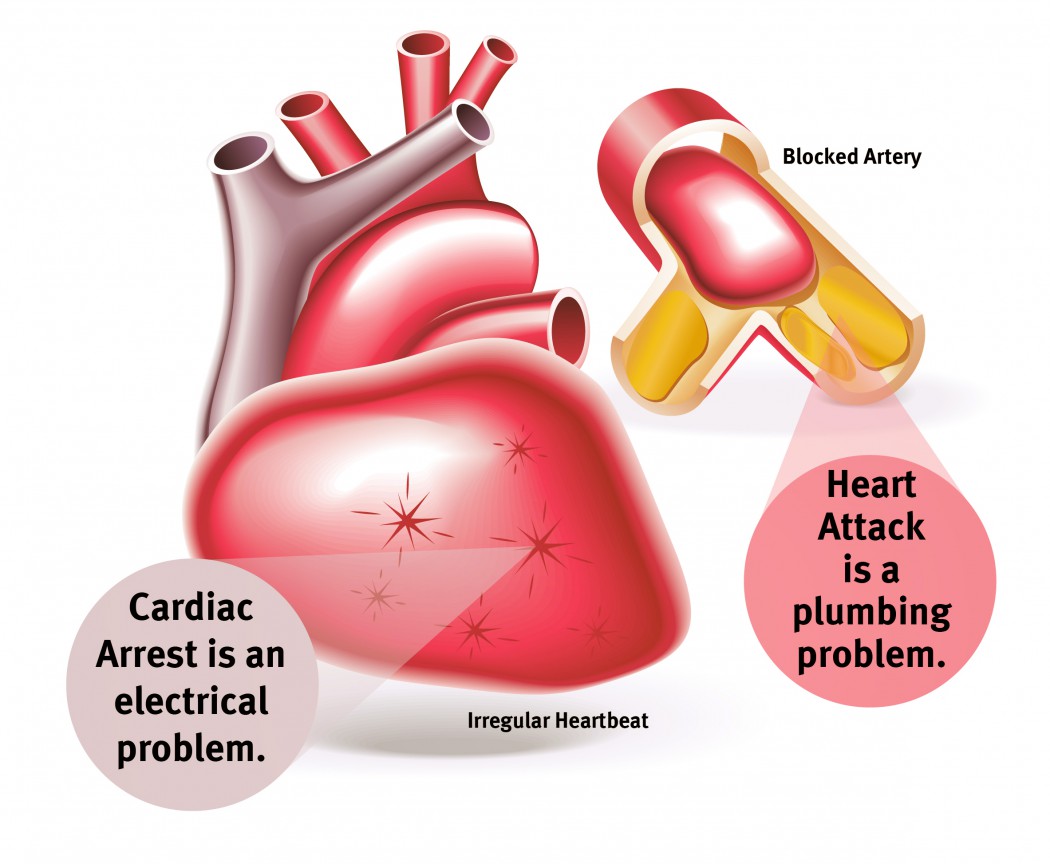Just because you know your risk for a heart attack, doesn’t mean you know your risk for heart failure. Oftentimes people use the terms heart attack and cardiac arrest interchangeably, even though they are two distinct conditions.
Heart Attack = Plumbing Issue
You can think of a heart attack as a plumbing issue—when your pipes get clogged it’s going to cause some big problems. A blockage of the coronary arteries causes a heart attack. The blockage prevents oxygen-rich blood from reaching a part of the heart muscle and, if not quickly resolved, can cause parts of the heart muscle to begin to die. With a heart attack your heart generally continues to beat, despite the blockage.
Cardiac Arrest = Electrical Issue
On the other hand, a cardiac arrest is an electrical problem. The electrical circuit to your heart goes out–it’s like a black out. It starts when the electrical signals that control the timing and the organization of the heartbeat become chaotic and then the heart suddenly stops pumping. Without blood pumping to the brain, loss of consciousness and death occurs.
Sometimes cardiac arrest can be triggered by another traumatic event, like drowning, electrocution, drug abuse, and even a heart attack. You are at higher risk if you have coronary heart disease, weakened heart (cardiomyopathy), or if you or a family member have history of certain heart conditions like arrhythmias, cardiac genetic disorders, or thickened heart muscle.
Warning Signs
There are varying warning signs you may experience before a heart attack—including chest pain, shortness of breath, weakness, dizziness, palpitations, and nausea—but the warning signs for cardiac arrest are pretty clear:
- Loss of consciousness
- No breathing
- No pulse
Death will occur if treatment is not provided in the first few minutes.
What You Can Do
So what should you do if you’re with someone who goes into cardiac arrest? First, you should dial 911 to get help on the way. You should immediately begin CPR. If an automated external defibrillator (AED) is nearby, use it. These are becoming more common in public places like malls, airports and community swimming pools. Prepare yourself now by signing up to learn CPR and how to use an AED through community classes, like Anne Arundel Medical Center’s Heartsavers Class.
Nearly 400,000 out-of-hospital deaths occur from cardiac arrest each year. Acting fast and knowing what to do can save lives.
 a board-certified cardiologist and cardiac electrophysiologist with Anne Arundel Medical Center. To reach his office, call 410-897–0822.
a board-certified cardiologist and cardiac electrophysiologist with Anne Arundel Medical Center. To reach his office, call 410-897–0822.



